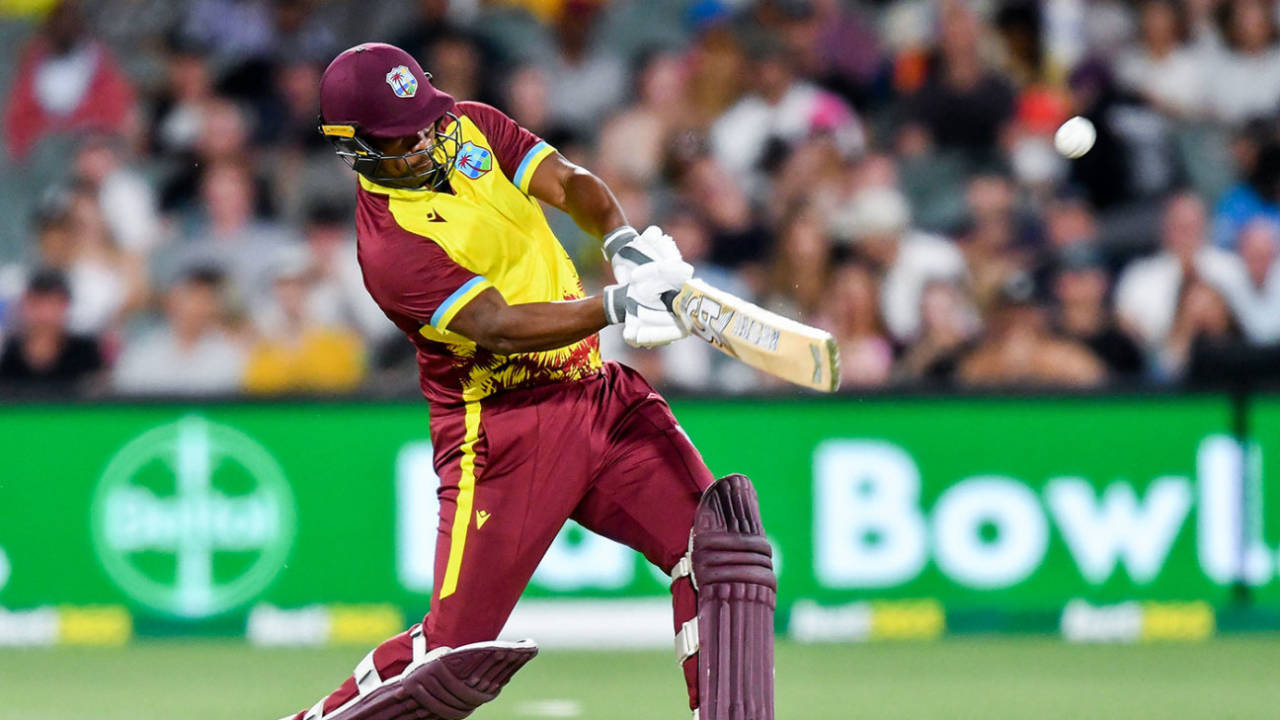South Africa vs West Indies 2022-23
A review of South Africa vs West Indies in 2022-23
Telford Vice
Johnson Charles launches a six • Getty Images and Cricket Australia
Test matches (2): South Africa 2 (24pts), West Indies 0 (0pts)
One-day internationals (3): South Africa 1, West Indies 1
Twenty20 internationals (3): South Africa 1, West Indies 2
One-day internationals (3): South Africa 1, West Indies 1
Twenty20 internationals (3): South Africa 1, West Indies 2
Neither side were in scintillating form. South Africa had won one of their previous five bilateral series across the formats, and suffered a humiliating exit from the 2022 Twenty20 World Cup at the hands of the Netherlands. West Indies, meanwhile, had won one of eight series - and embarrassing defeats by Scotland and Ireland had tipped them out of the T20 World Cup at the qualifying stage.
For the first time, South Africa had split the coaching duties: Shukri Conrad was in charge for Tests, Rob Walter for the white-ball formats. The captaincy, too, had been rearranged, with Temba Bavuma leading in Tests and ODIs, and Aiden Markram taking over for the Twenty20s. If the South Africans hoped the three series would provide a clear verdict on the new set-up, they were probably disappointed. Results were inconclusive: in the Tests, they were the stronger; then, after the first game was washed out, the one-dayers were shared; finally, West Indies edged an astonishingly high-scoring T20 series.
Those results bolstered the theory that the tourists had become primarily a limited-overs force. Since their first T20 game, in February 2006, they had won 22% of their Tests, 38% of their ODIs, and 44% of their T20s. "I do think we are generally more aggressive types of players," said Shai Hope, the 50- over captain. "The white-ball formats suit our style." South Africa's Test success was partly down to better surfaces. Since India's visit in 2017-18 - when seaming wickets had helped the hosts exact revenge for defeat on spinning subcontinental surfaces a couple of years earlier - pitches had tended to help the bowlers.
Totals in this series were still not huge, but there was a better balance between bat and ball. Bavuma hit his second Test century, more than seven years after his first, while Tony de Zorzi (85 in the Second Test) and young quick Gerald Coetzee (nine wickets at 15 across the series) made encouraging starts to their careers. Markram had been left out for the recent tour of Australia, but celebrated his return to the Test fold by scoring 115 at Centurion (which secured the match award) and 96 at Johannesburg (which secured the series award).
Two strike bowlers claimed 12 wickets in the Tests: West Indies' Alzarri Joseph, and South Africa's Kagiso Rabada, who averaged 11. Bavuma followed his Test century with another in the second one-dayer (despite having tweaked a hamstring in the field), but it was an unbeaten 128 from Hope, the opposing captain, that proved the match-winner. Chasing 336, South Africa reached 184 for two in the 25th, only to lose their way. In the third game, Heinrich Klaasen rocketed to three figures from 54 balls; victory came with 20 overs to spare.
That set the searing pace for the Twenty20 series, which smashed record after record. The average scoring-rate was 12 an over, and the second game, at Centurion, produced 517 runs, an unprecedented aggregate in all T20 cricket. Johnson Charles slammed 118 from 46 balls, his assault on the bowling - ten fours and 11 sixes - as outrageous as it was orthodox. It was the innings of the tour, yet it could not bring victory. Quinton de Kock's 100, raised from his 43rd delivery, was at the heart of South Africa's world-record ascent of 259. In a series likely to give bowlers nightmares for years, a total of 18 turned their arm over. Of those, 17 cost more than ten an over; the exception was Anrich Nortje, whose economy-rate of 7.57 proved his class.
